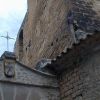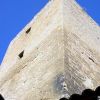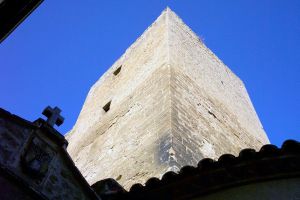Between the 15th and 16th centuries a particular typology of castle construction was common in the region. It brought together civil and defensive elements and gave rise to fortified palaces, which extended over the lands of the gentry. They were huge and important structures, which usually had a square layout with towers at each corner and large rooms typical of a palace. Some of these were adapted to store firearms or artillery.
Their principal objective was the defence and immediate control of the possessions of the marquisate. The 16th century presented a particularly tumultuous panorama as there were many confrontations between villagers and nobility over local resources such as land, water, mountains and pasture.
This particular palace is the ancient residence of the Marquises de Artasona and is clearly defensive in character being built on a rocky platform with covered access to the centre of the village and displaying a number of arrowslits in the tower. Its integration into the village creates a delightful image set against the riverside terraces of the Cinca. Although there is documentation to record its origins as being the year 1095, the construction standing today displays 15th and 16th century renovations.
The complex has a square tower with arrowslits and a high door. This tower attached to the palace, which has various floors finished off with a gallery of arches. The enclosure was sealed off by means of an arched doorway, which at the same time provided access to the village. It bears the crest of the Claramonte family as this area belonged to their baronetcy before it passed into the hands of the Marquises of Artasona.





